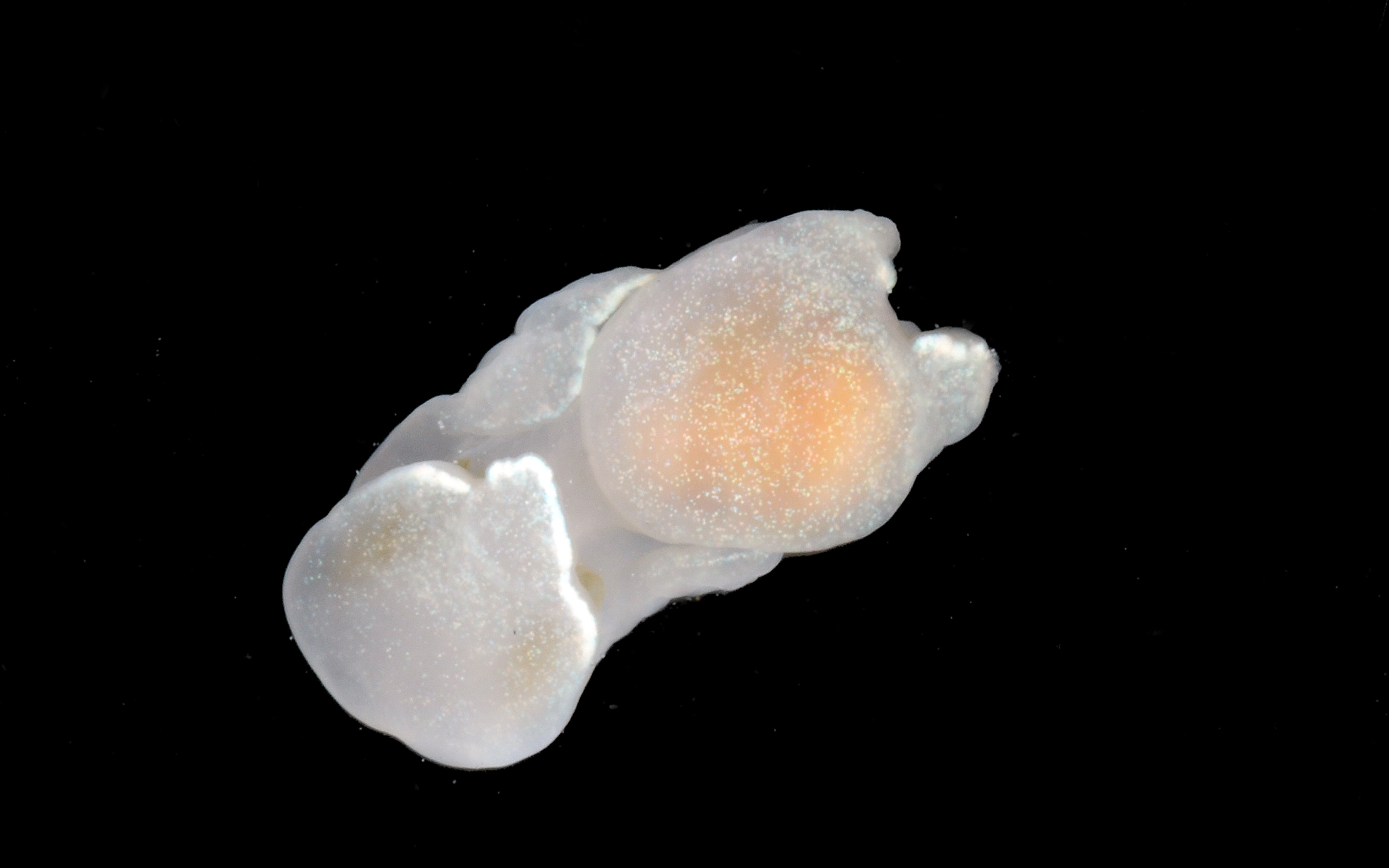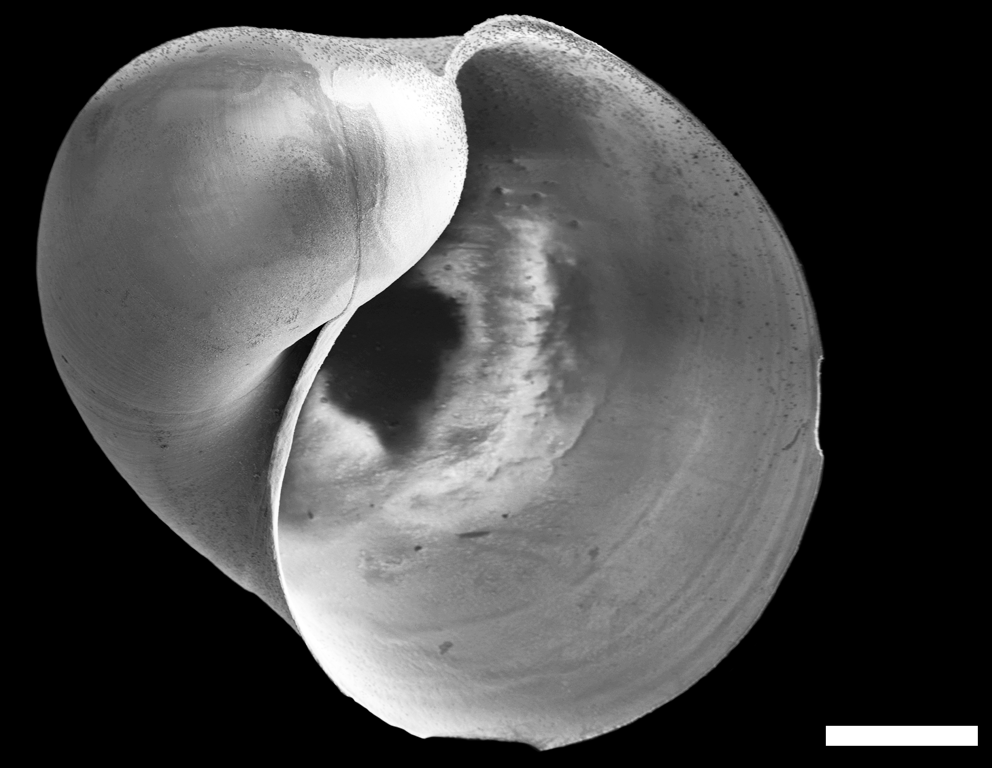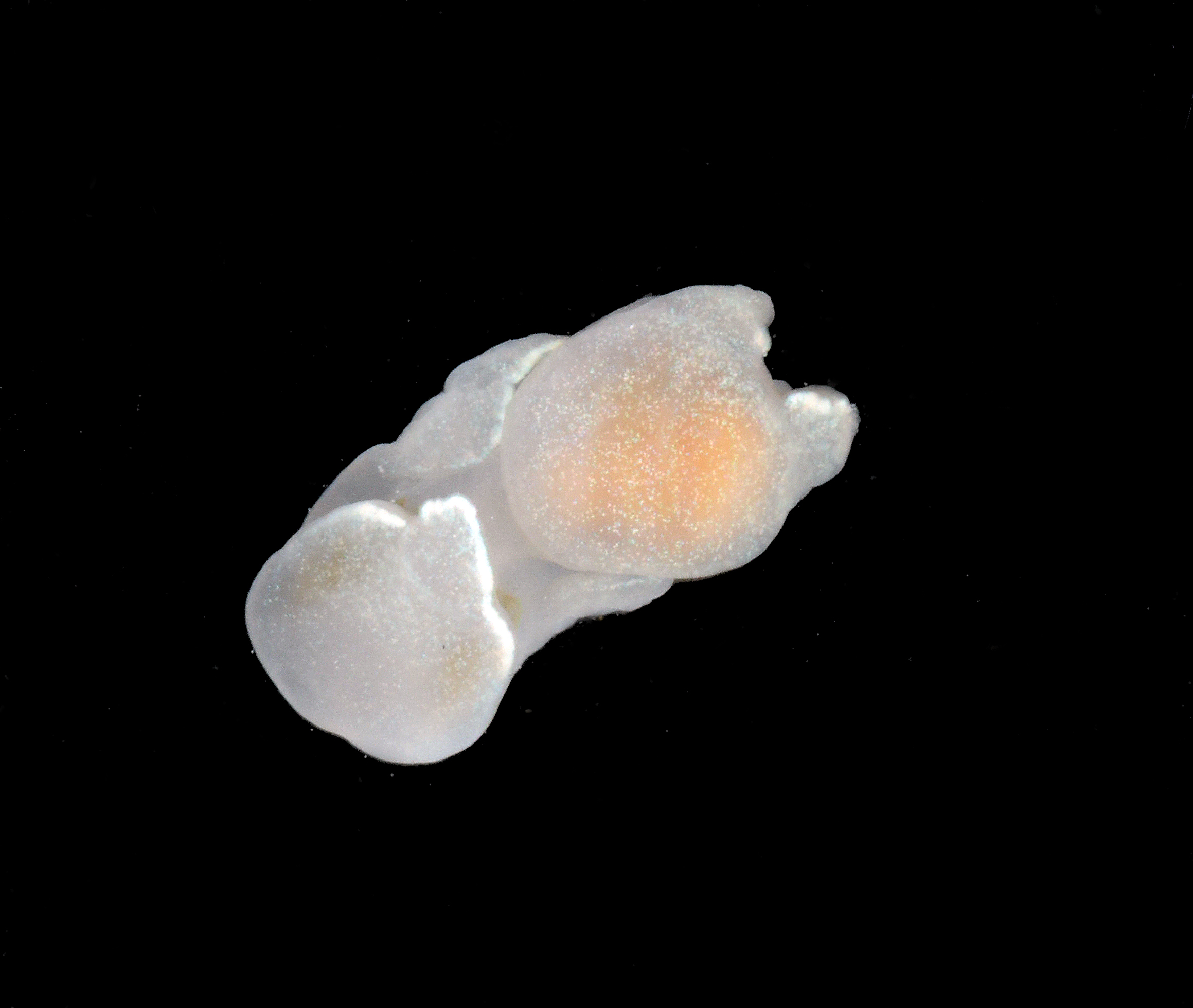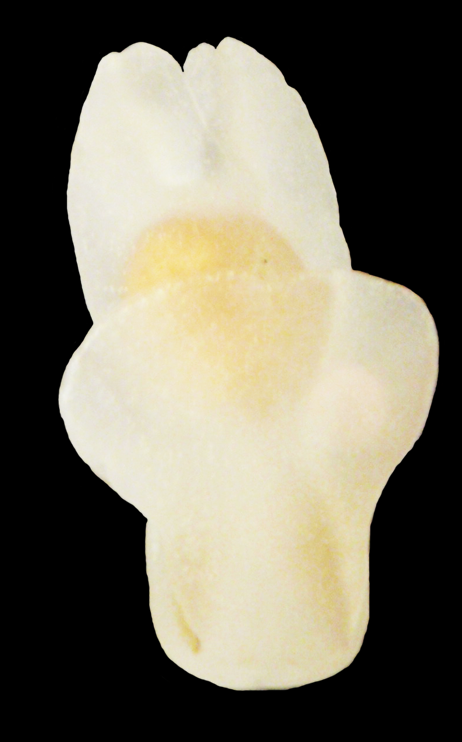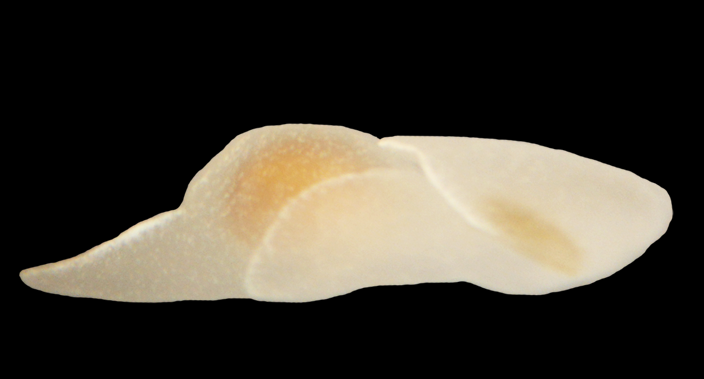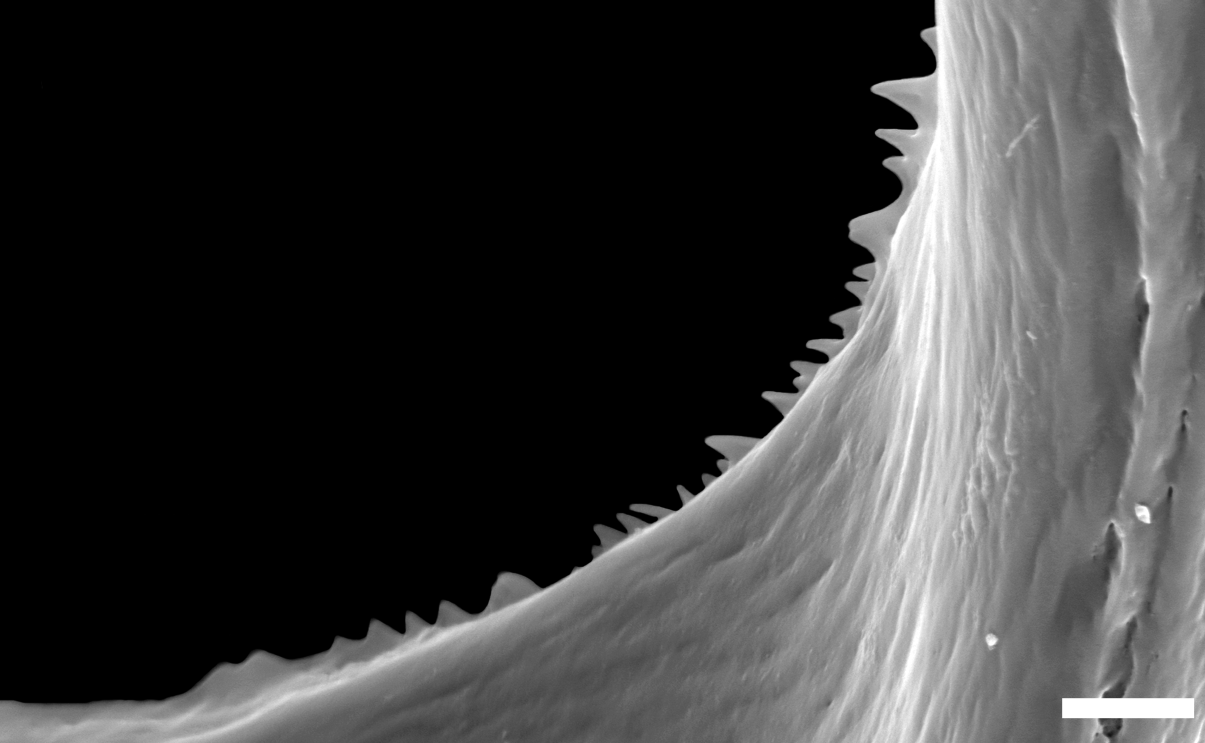Philine ventricosa
Shell description
The thin shell is internal and brownish transparent in colour. The shell is globose in shape. The opening is wide and the edge is smooth. The top of the shell (apex) is blunted and slightly sunken into the shell. The shell is umbilicated. The surface is smooth with no apparent pattern. The size of the shell varies between 2–6 mm.
Animal description
The body is whitish transparent with opaque dots along the margins of the head shield, foot, lateral lobes of the foot (parapodial lobes) and the two large lobes at the rear of the animal (bifurcated posterior pallial lobes). The tissue covering the shell (mantle) is thin and the head shield narrows towards the back. Large brown sensory organs (Hancock’s organ) are visible at the sides of the head shield.
Anatomy
The radula consists of 15 rows of teeth with two outer lateral teeth and one inner lateral tooth. The central (rachidian) tooth is absent. The salivary glands are slightly longer than the part of the foregut carrying the radula (buccal mass). The gizzard is globose, not surrounded by muscle fibres and holds no plates. The male reproductive system consists of a long, thin prostate where the tubes are wound together; the tubular penis chamber is clearly separated from the prostate.
Ecology
Occurs on soft bottoms and mud at depths between 80 and 220 m.
Geographical distribution
In Norway known from Lofoten and the Bergen area (60°25′N). Also found around the British Isles, and one doubtful specimen has been reported from the Faeroe Islands.
References
Ohnheiser LT og Malaquias MAE (2013). Systematic revision of the gastropod family Philinidae (Mollusca: Cephalaspidea) in the northeast Atlantic Ocean with emphasis on the Scandinavian peninsula. Zoological Journal of the Linnean Society 167(2): 273-326. DOI: 10.1111/zoj.12000.
Eilertsen ME og Malaquias MAE (2013). Systematic revision of the genus Scaphander (Gastropoda, Cephalaspidea) in the Atlantic Ocean with a molecular phylogenetic hypothesis. Zoological Journal of the Linnean Society 167(3): 389-429. http://onlinelibrary.wiley.com/doi/10.1111/zoj.12013/abstract. DOI: 10.1111/zoj.12013.
